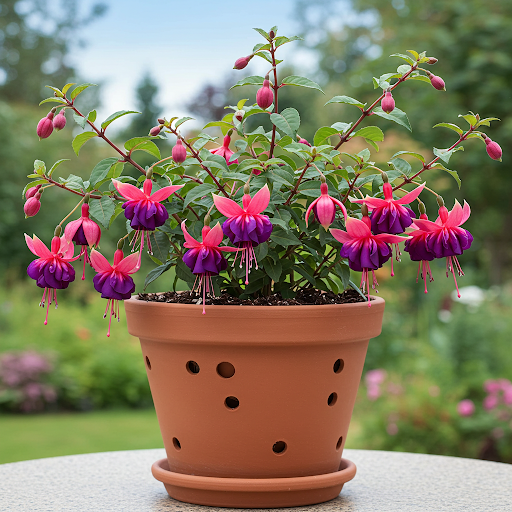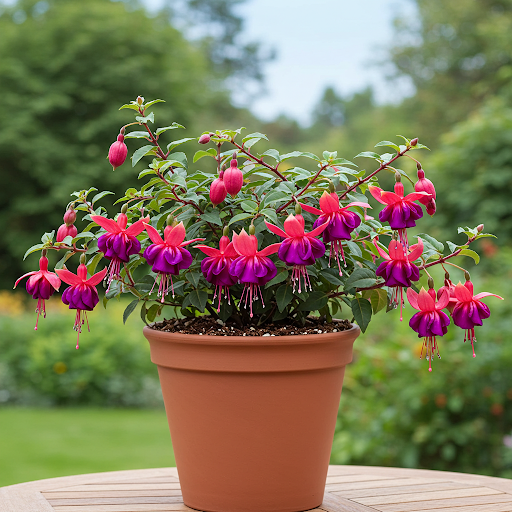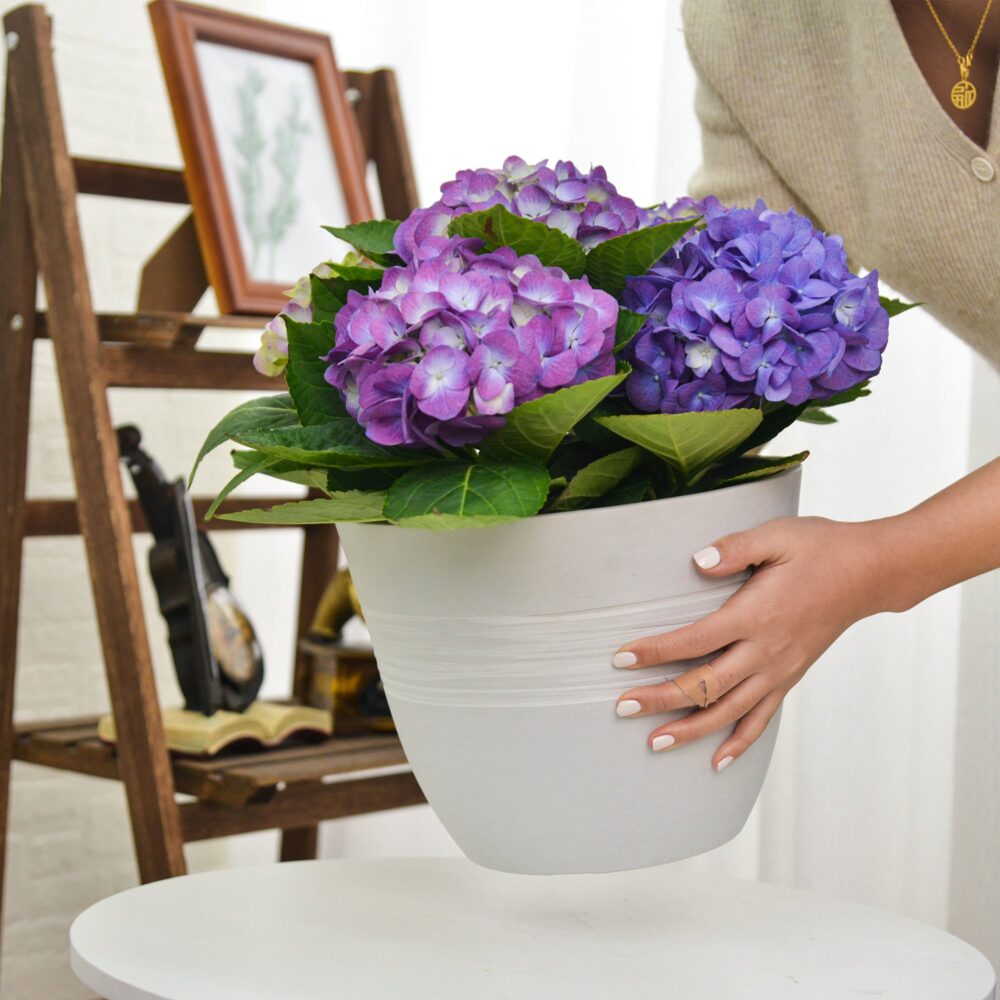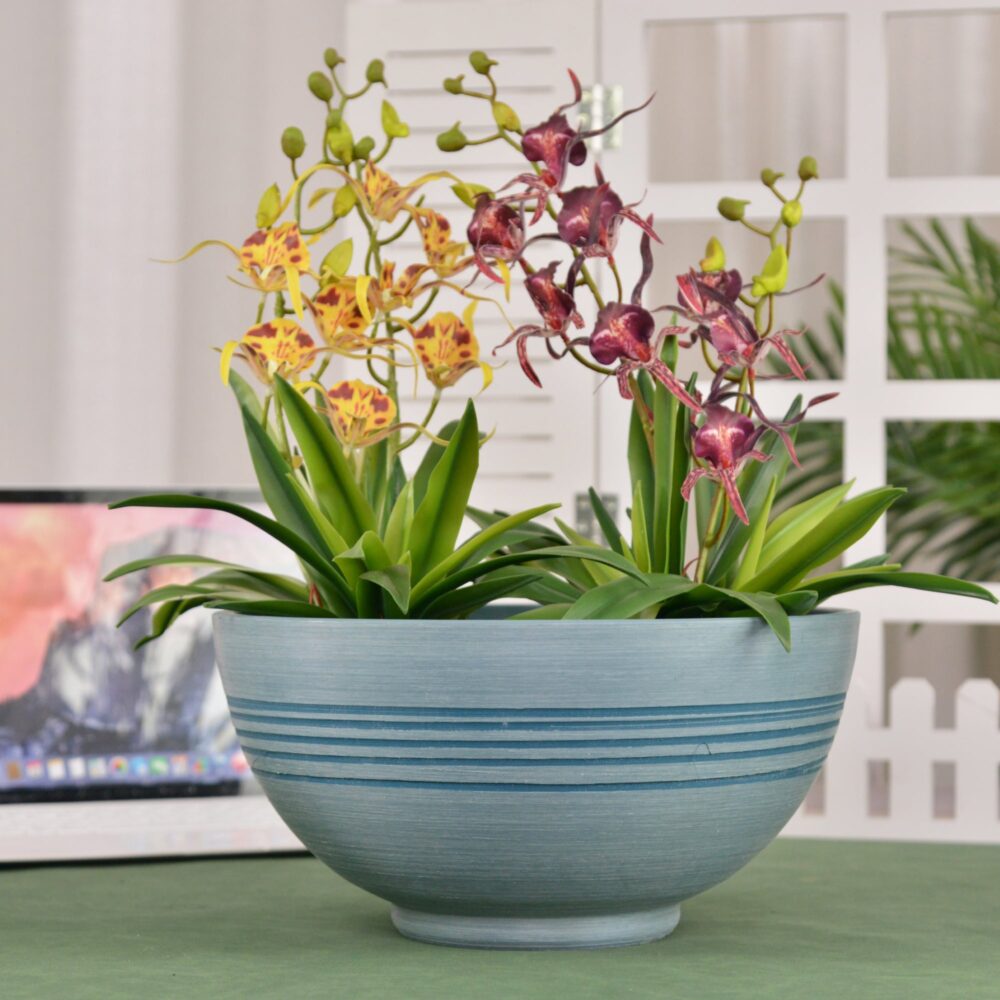Fuchsias in Pots: The Ultimate Guide to Growing Exquisite Fuchsias in Outdoor Containers
Want to add an elegant touch of dangling, jewel-like blooms to your patio, balcony, or shaded garden spaces? Fuchsiasare a sophisticated and rewarding choice for outdoor container gardening, celebrated for their unique, pendulous flowers in vibrant and often bi-colored combinations. From classic trailing fuchsias perfect for hanging baskets to more upright varieties for patio pots, fuchsias bring a touch of refined beauty to any outdoor setting. This comprehensive guide will provide you with everything you need to know to grow fuchsias successfully in outdoor pots, from selecting the best varieties and containers to mastering essential care techniques for a season filled with fuchsia elegance.

Fuchsiasare
What are Fuchsias (Fuchsia)?
Fuchsias (Fuchsia) are a genus of flowering plants in the family Onagraceae, native primarily to Central and South America, but also found in New Zealand, Tahiti, and other regions. Often grown as annuals in cooler climates (but are perennial in warmer, frost-free zones), fuchsias are beloved by gardeners for their distinctive, pendulous, lantern-like flowers and graceful, often trailing growth habits. Fuchsia flowers are typically bi-colored, with contrasting sepals and petals creating a “dancing lady” effect, and come in a wide range of color combinations, including shades of pink, purple, red, white, and orange. They are broadly categorized into types based on growth habit, including Trailing Fuchsias, Upright Fuchsias, and Semi-Trailing Fuchsias. Fuchsias are cherished for their unique flower shape, elegant appearance, shade tolerance, long blooming season, and attractiveness to hummingbirds, making them a sophisticated and beautiful addition to shaded container gardens, hanging baskets, and patio plantings.
Are Fuchsias (Fuchsia) Good for Outdoor Pots?
Yes, Fuchsias (Fuchsia) are exceptionally well-suited for outdoor pots and container gardening. Their trailing, cascading, semi-trailing, and compact upright growth habits make them ideal for filling pots, window boxes, hanging baskets, and mixed container arrangements with graceful blooms and foliage. Fuchsias thrive in partially shaded locations and bloom profusely throughout the cool to warm seasons, providing a long-lasting and elegant floral display in containers. Their adaptability to shade, unique flower forms, and diverse growth habits make them a fantastic and rewarding choice for container gardens of all styles, especially for brightening up shaded patios, balconies, and porches.
Ideal Growing Conditions for Fuchsias (Fuchsia) in Pots:
- Types of Fuchsias for Pots: Many fuchsia varieties are excellent for pots, but consider your desired look and container type when choosing:
- Trailing Fuchsias: (e.g., Fuchsia x hybrida ‘Trailing сорта’, ‘Swingtime’, ‘Voodoo’, ‘Dark Eyes’) – Vining and cascading, typically trailing 1-3 feet or more, perfect for hanging baskets, tall planters, and allowing to spill over pot edges. Known for their classic trailing habit, profusion of flowers along the vines, and suitability for hanging displays. Excellent for creating waterfalls of color and softening container edges.
- Upright Fuchsias: (e.g., Fuchsia x hybrida ‘Upright сорта’, ‘Beacon’, ‘Dollar Princess’, ‘Genii’) – Bushy and upright, typically reaching 1-3 feet tall, suitable for standard pots, mixed containers, and adding vertical interest. Good for adding structure and height to container arrangements. Choose more compact upright varieties for pots.
- Semi-Trailing Fuchsias: (e.g., Fuchsia x hybrida ‘Semi-Trailing сорта’, ‘Annabel’, ‘Pink Marshmallow’) – Have a more mounding and slightly cascading habit, falling somewhere between upright and trailing. Versatile for pots, window boxes, and elevated planters, offering a fuller, slightly cascading look.
- Hardy Fuchsias (Fuchsia magellanica and hybrids): (e.g., Fuchsia magellanica ‘Riccartonii’, Fuchsia ‘Hawkshead’) – More cold-tolerant and perennial in some zones (check hardiness for specific varieties), these fuchsias are often more upright and shrubby, and can be grown in larger pots as focal points or in mixed perennial containers. Offer a more robust, longer-lived option for container gardening in suitable climates.
- Light: Fuchsias thrive in partial shade to shade. They need protection from hot afternoon sun, which can scorch leaves and fade flowers. Morning sun is generally tolerated, but bright, direct sun for extended periods, especially in the afternoon, should be avoided. Dappled shade or filtered light throughout the day is ideal. In deep shade, fuchsias may produce fewer blooms. Choose a location for your fuchsia containers that provides shade during the hottest part of the day, or filtered light throughout the day. East-facing locations with morning sun and afternoon shade are often excellent.
- Soil: Fuchsias prefer moist, well-draining soil that is rich in organic matter. Use a high-quality potting mixspecifically formulated for containers or flowers. Amend potting mix with peat moss, coco coir, or compost to improve moisture retention, drainage, and fertility. Avoid heavy, compacted soil or garden soil in pots, as they can become waterlogged. A slightly acidic to neutral pH (around 6.0-7.0) is ideal for fuchsias. Consistent moisture retention and good drainage are both important for fuchsias in pots.
- Watering: Fuchsias need consistently moist soil and are not drought-tolerant. Water thoroughly and regularly to keep the soil evenly moist, especially during warm weather and blooming periods. Water when the top inch of soil feels slightly dry. Water deeply until water drains out of the drainage holes. Do not allow the soil to dry out completely, even for short periods, as fuchsias will wilt quickly and may drop buds and flowers if allowed to dry out. However, they also do not like to be waterlogged. Aim for consistently moist, but not soggy soil. Watering frequency will depend on weather conditions, light levels, pot size, and plant size. During hot, sunny, or windy weather, you may need to water daily, or even twice a day, especially for hanging baskets and smaller pots which dry out rapidly. Check soil moisture regularly and adjust watering accordingly. Water at the base of the plant to keep foliage and flowers dry and help prevent fungal diseases.
- Temperature: Fuchsias are cool to moderate temperature plants and thrive in temperatures between 60°F to 80°F (15°C to 27°C). They prefer cooler temperatures, especially during blooming. They are sensitive to extreme heat and high temperatures above 85°F (29°C) can cause stress, bud drop, and reduced flowering. Provide shade during hot afternoons to help keep them cool. Fuchsias are damaged by frost and freezing temperatures. In areas with frost, fuchsias are typically grown as annuals, or overwintered indoors in a cool, dark, frost-free location.
- Fertilizer: Fuchsias are moderate to heavy feeders and benefit from regular fertilization, especially during their active growing and blooming season. Fertilize every 2-4 weeks during the spring and summer blooming periodto encourage continuous flowering. Use a balanced liquid fertilizer (e.g., 10-10-10 or 20-20-20) diluted to half strength, or a fertilizer specifically formulated for flowering plants or fuchsias. You can also use a slow-release fertilizer incorporated into the potting mix at planting time, supplemented with liquid fertilizer during peak bloom. Avoid over-fertilizing, which can lead to leggy growth and salt buildup in the soil. Reduce or stop fertilizing during periods of dormancy or when flowering slows down in very hot weather.
Choosing the Right Pots for Fuchsias (Fuchsia):
- Suitable Pot Types: Fuchsias are adaptable to various pot types, including plastic, resin, ceramic, terracotta (with caution), and hanging baskets. Consider these factors when selecting pot types for fuchsias:
- Plastic Pots: Lightweight, inexpensive, retain moisture well, available in various colors and styles. Excellent choice for fuchsias, especially for moisture-loving trailing types and hanging baskets. Choose good quality plastic pots that are durable and UV-resistant. Darker colors can heat up more in sun, so lighter colors may be preferable in sunny locations.
- Resin Pots: Lightweight, durable, available in various styles mimicking terracotta or ceramic, and retain moisture well. A good alternative to heavy ceramic pots, and often offer better moisture retention than terracotta.
- Ceramic Pots: Available in many decorative styles, can add a decorative element to your container garden, and retain moisture reasonably well. Ensure good drainage. Good for upright and semi-trailing fuchsias. Choose glazed ceramic pots to reduce water evaporation.
- Terracotta Pots: Porous, allow good aeration and drainage, and aesthetically classic, but dry out very quickly, requiring very frequent watering, which can be challenging for moisture-loving fuchsias. Terracotta can be used, especially in cooler, humid climates or for gardeners who enjoy frequent watering, but require careful monitoring of soil moisture. Consider lining terracotta pots with plastic to reduce water loss.
- Hanging Baskets: Ideal for trailing fuchsias, create cascading displays of color. Require very frequent watering and fertilization due to their exposed nature and quick drying. Choose baskets with good water retention and sturdy hangers. Line baskets with coco coir or sphagnum moss to help retain moisture.
- Window Boxes & Long Planters: Excellent for mass plantings of trailing or upright fuchsias, or mixed arrangements, in shaded locations. Trailing types will spill beautifully over the edges. Choose boxes with good drainage and sufficient depth.
- Drainage: Good drainage is essential for fuchsias to prevent root rot, while also maintaining adequate moisture. Ensure your chosen pot has drainage holes at the bottom. Avoid pots without drainage holes. Elevating pots slightly can improve drainage and air circulation around the base. Adding a layer of gravel or pot shards at the base of the pot is generally not necessary if using a well-draining, moisture-retentive potting mix.
- Pot Size: Choose pot sizes appropriate for the type and mature size of the fuchsia you are planting.
- Trailing Fuchsias: For trailing fuchsias, hanging baskets and pots should be at least 10-12 inches in diameter, and can be larger for more mature displays and to accommodate multiple plants. Deeper pots are better to allow for more root development and moisture retention.
- Upright Fuchsias: For upright fuchsias, pots that are 8-10 inches in diameter are suitable for individual plants. For fuller displays or multiple plants, use pots that are 10-14 inches or larger, or window boxes.
- Semi-Trailing Fuchsias: For semi-trailing fuchsias, pots that are 10-12 inches in diameter are generally ideal for individual plants, or larger for fuller displays and mixed plantings.
- Depth: Ensure pots are at least 8-10 inches deep for most fuchsia types. Deeper pots are better for all types, especially trailing and larger upright varieties, to provide adequate root space and moisture retention.
- Color and Style: Choose pot colors and styles that complement your fuchsia blooms and your outdoor décor. Elegant or classic pot styles enhance the sophisticated look of fuchsias. Cool-toned pots in greens, blues, purples, or grays can complement the jewel tones of fuchsia flowers. Consider using decorative hanging baskets for trailing fuchsias to showcase their cascading blooms.
Essential Care Tips for Thriving Fuchsias (Fuchsia) in Outdoor Pots:
- Watering: “Keep Soil Consistently Moist, Never Let Dry Out”. Water thoroughly and regularly to keep the soil evenly moist. Water when the top inch of soil feels slightly dry. Never allow soil to dry out completely. Water more frequently in warm weather, sunny locations, and for hanging baskets and smaller pots. Avoid overwatering and soggy soil, but prioritize consistent moisture.
- Sunlight: Provide Partial Shade to Shade. Place fuchsia pots in a location that receives partial shade or shade, especially during the hottest afternoon hours. Morning sun is generally tolerated. Avoid hot, direct afternoon sun.
- Fertilizing: Feed Every 2-4 Weeks During Blooming Season. Fertilize every 2-4 weeks during the spring and summer blooming season with a balanced liquid fertilizer or flowering plant fertilizer to encourage continuous blooming. Reduce or stop fertilizing in fall and winter dormancy periods.
- Deadheading (Encourage More Blooms & Tidiness): Deadhead spent or faded flowers regularly to encourage more blooms and keep plants looking tidy. Pinch or snip off dead flower heads, including the developing seed pod behind the flower, to promote continuous flowering.
- Pinching Back/Pruning (Promote Bushiness & Shape): Pinch back stem tips of young fuchsias to encourage branching and bushier growth. Regular light pruning throughout the growing season can help maintain shape, remove dead or weak growth, and encourage more flowering. More significant pruning is typically done in late winter or early spring before new growth begins to shape plants and remove overwintered growth.
- Overwintering (In Cold Climates): In areas with frost or freezing temperatures, fuchsias are not reliably hardy and are often treated as annuals. However, you can overwinter fuchsias indoors to save them for the next growing season. Before the first frost, bring potted fuchsias indoors to a cool, dark, frost-free location (e.g., unheated garage or basement). Reduce watering significantly during dormancy, just enough to keep the soil barely moist and prevent roots from drying out completely. In late winter or early spring, gradually increase light and water, and begin fertilizing as new growth emerges. Move plants back outdoors after the last frost.
- Pest and Disease Control: Fuchsias are generally relatively pest and disease-resistant, but monitor for common pests like aphids, whiteflies, spider mites, and fuchsia gall mites. Fungal diseases like rust, botrytis blight, and root rot can occur, especially in overly humid or wet conditions, or with poor air circulation. Ensure good air circulation by spacing plants adequately, avoid overcrowding, water at the base of the plant, and provide good drainage. Treat any pest or disease issues promptly with insecticidal soap, horticultural oil, neem oil, or appropriate insecticides or fungicides if necessary. Good air circulation and proper watering are key to preventing fungal issues.
Popular Fuchsia Cultivars for Pots (by Type):
- Trailing Fuchsias: ‘Swingtime’, ‘Voodoo’, ‘Dark Eyes’, ‘Dollar Princess’ (can be trained to trail), ‘Lena Dalton’, ‘Marinka’, ‘Paula Jane’
- Upright Fuchsias: ‘Beacon’, ‘Genii’, ‘Thalia’, ‘Seventh Heaven’, ‘Army Nurse’, ‘Checkerboard’, ‘Display’
- Semi-Trailing Fuchsias: ‘Annabel’, ‘Pink Marshmallow’, ‘Alison Ewart’, ‘Bella Rosella’, ‘Happy Wedding’
- Hardy Fuchsias: Fuchsia magellanica ‘Riccartonii’, Fuchsia ‘Hawkshead’, Fuchsia ‘Mrs. Popple’, Fuchsia ‘Genii’(can be hardy in milder zones)
In Summary:
Growing Fuchsias (Fuchsia) in outdoor pots is a wonderfully elegant and rewarding way to add unique, dangling blooms and refined beauty to your shaded patios, balconies, and gardens. Their shade tolerance, long blooming season, and diverse growth habits make them a perfect choice for container gardeners seeking sophisticated and graceful floral displays. By providing partial shade to shade, consistently moist and well-draining potting mix in pots with drainage, fertilizing regularly during bloom, deadheading spent flowers, and overwintering in cold climates, you can easily cultivate stunning fuchsia displays in pots and enjoy their exquisite charm and hummingbird appeal all season long.

Fuchsiasare
For more detailed botanical information and to explore the enchanting world of Fuchsia species and cultivars, you can visit the Wikipedia page on Fuchsia.
Important Note: Fuchsias (Fuchsia) are considered mildly toxic to humans and pets if ingested in large quantities, potentially causing mild stomach upset. It’s best to keep plants out of reach of curious children and pets, although serious poisoning is rare. The primary care challenges with fuchsias in pots are providing adequate shade and consistent moisture, especially in warmer climates. With attention to these needs and regular care, you can enjoy a season filled with the exquisite beauty and hummingbird-attracting charm of fuchsias in your outdoor containers.**
Planter for Indoor Outdoor Plants, Set of 2 Modern Decorative Plant Pots with Drainage Hole, Decorative Flower Pots
By greenship-seo|2025-01-14T12:26:44+00:00January 14, 2025|Categories: Hand-carving Series|Tags: Decorative Flower Pots|
KC2-11V
By greenship|2024-08-16T05:39:50+00:00August 16, 2024|Categories: Hand-carving Series|
13 inch Planter for Indoor Plants, Set of 2 Modern Decorative Plant Pots with Drainage Hole, Cute Bowl Shape Flower Pots
By greenship-seo|2025-04-10T07:41:46+00:00January 10, 2025|Categories: Hand-carving Series|Tags: Decorative Flower Pots, Self-Watering Pots|
11V
By greenship|2024-08-13T03:05:48+00:00August 13, 2024|Categories: Hand-carving Series|
11TH
By greenship|2024-08-13T02:50:25+00:00August 13, 2024|Categories: Hand-carving Series|
k2-21G
By greenship|2024-08-13T06:17:26+00:00August 13, 2024|Categories: Hand-carving Series|






